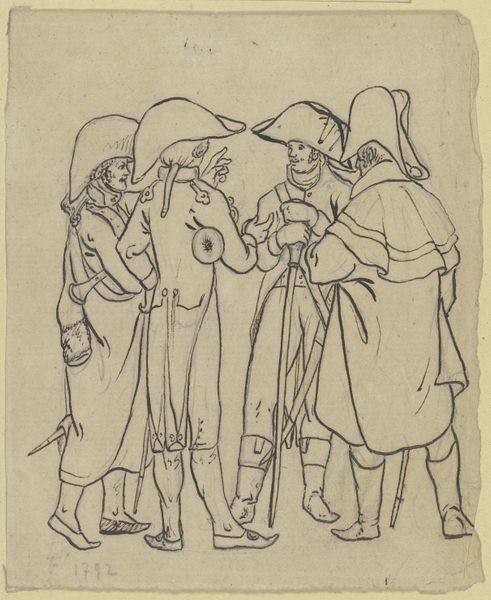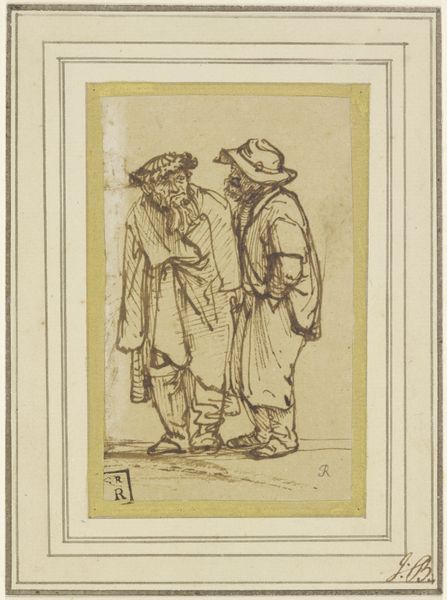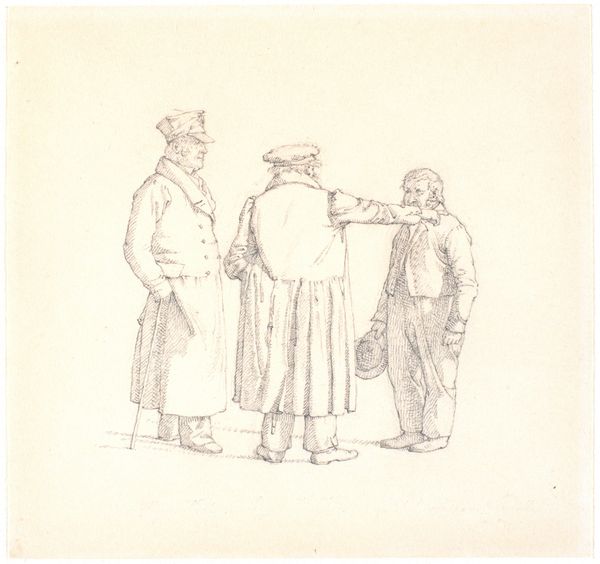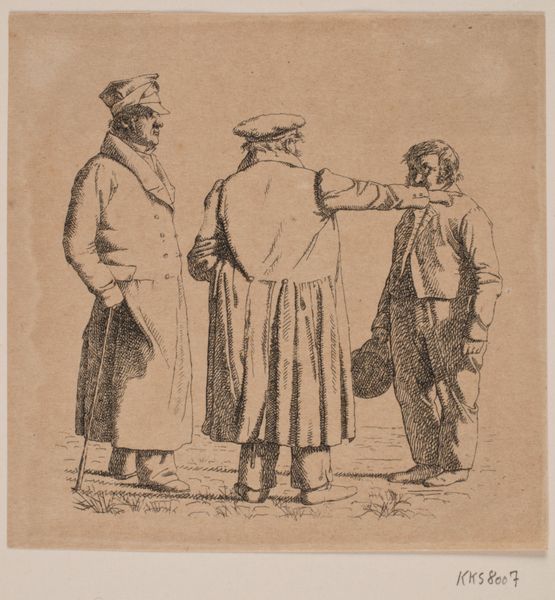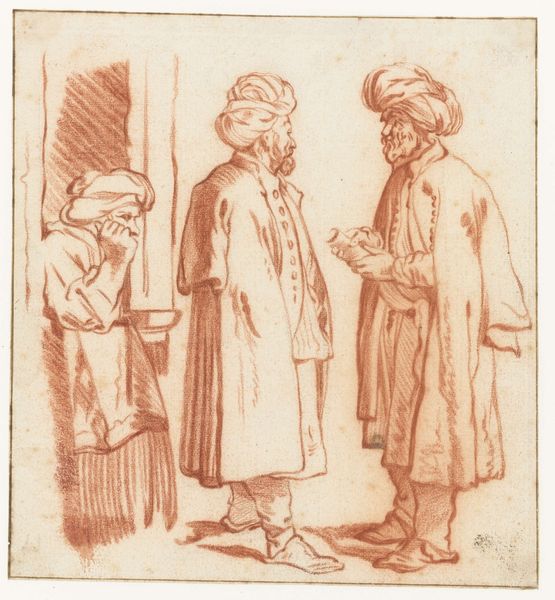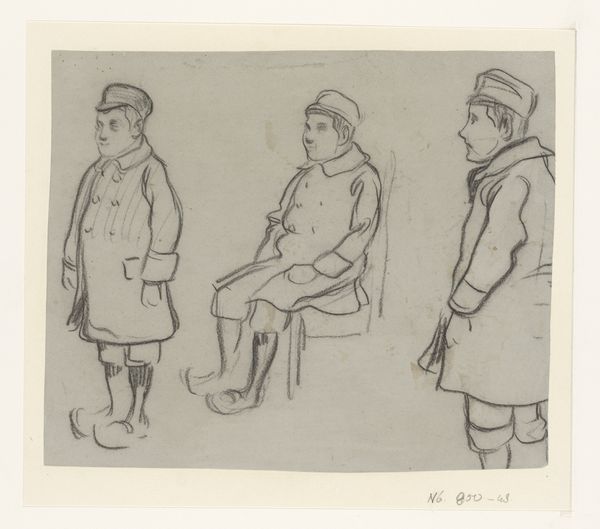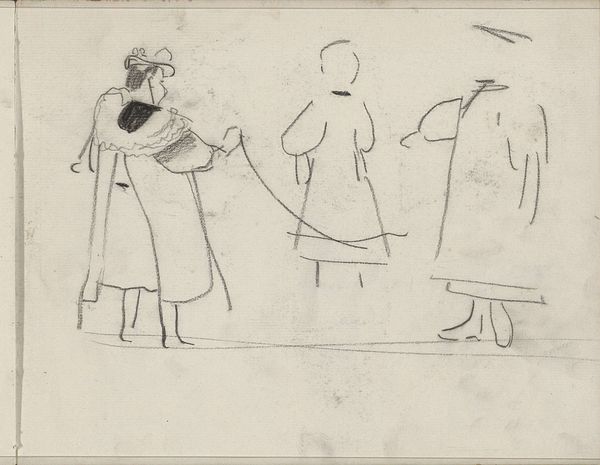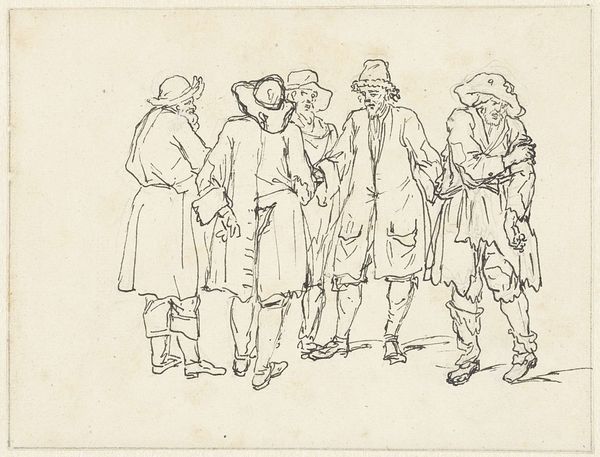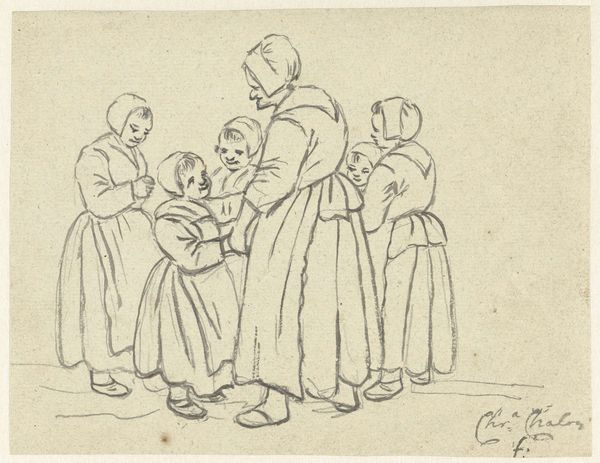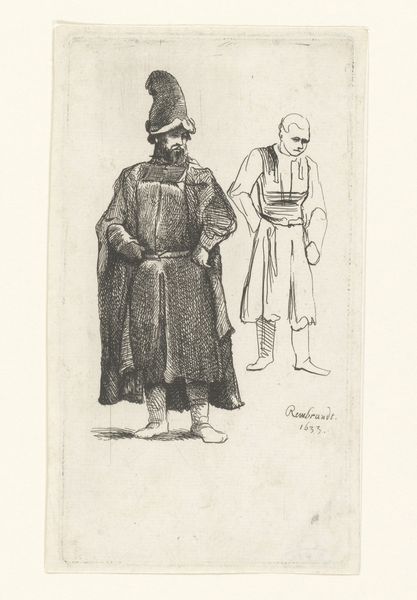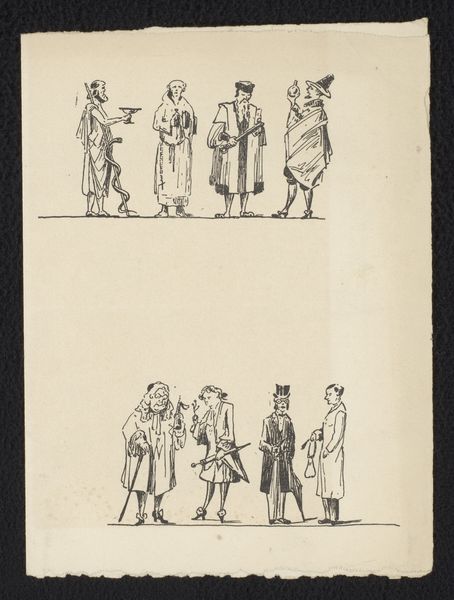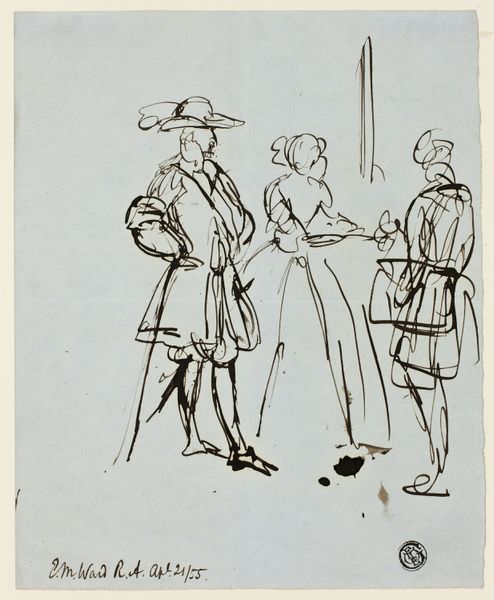
drawing, ink, pencil
#
portrait
#
drawing
#
figuration
#
ink
#
pencil
Copyright: Public Domain
Curator: Here we have Franz Pforr’s drawing, “Three Poles,” held at the Städel Museum. It is crafted using pencil and ink. Editor: My first impression is one of subdued observation. The muted tones of the paper lend an air of quiet solemnity to the figures portrayed. Curator: It's interesting you say that, because Pforr, as part of the Brotherhood of St. Luke, sought to revive honesty and spirituality in German art, positioning art within moral and political frameworks. These depictions of Polish figures may reflect a larger narrative about cultural identity during that era. Editor: Exactly. Look at the detail in their clothing – the precise rendering of their attire. You can almost feel the weight and texture of the cloth used, which points to the labor involved in creating such garments and highlights social status. These materials signal craftsmanship and its crucial social context. Curator: Their attire does stand out. Note how their clothing marks them as distinctly Polish during a period when nationalism was a burgeoning force. This work might be speaking to German perceptions, or perhaps asserting Polish cultural identity on the artistic stage. Editor: I’m drawn to the apparent fragility of the drawing itself. You can almost see the hand of the artist. The pencil lines feel so direct, it's all so rudimentary and immediate, it speaks volumes about the process of artmaking. It allows us to focus on the construction, rather than becoming lost in a finished image. Curator: And it provides insight into Pforr's academic training while demonstrating the artistic movements prevalent during the rise of national consciousness across Europe. Pforr places a direct focus on representing cultural types on the continent. Editor: To me, this piece makes one think about how the most unassuming sketches reveal far more when you start looking into their materiality and context. Curator: Indeed, observing Pforr’s piece really urges us to consider the intersection between cultural representation and artistic intention, the public life of art, and the dynamics of nationalism that underscore this seemingly simple drawing.
Comments
No comments
Be the first to comment and join the conversation on the ultimate creative platform.

